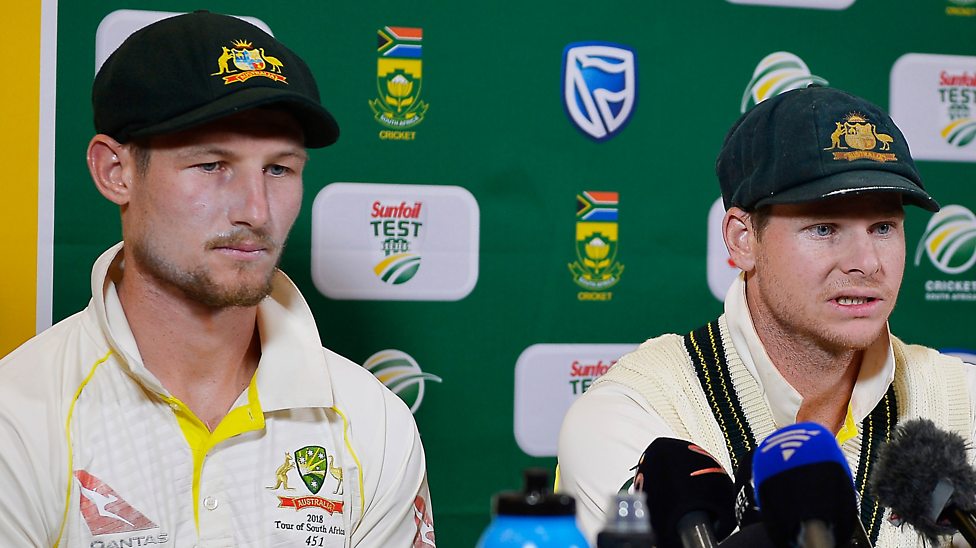At the end of November last year, Cameron Bancroft and Steve Smith were all smiles in the aftermath of a resounding first Ashes test victory in Brisbane. Fast forward four months and the laughs and smiles of that press conference could not be more contrasting with the two forlorn figures who addressed the media in Cape Town on Saturday.
Whilst the ball-tampering scandal that emerged over the weekend has drawn a variety of differing opinions and responses from pundits, ex-professionals and fans alike, it is without doubt the single biggest issue Australian cricket has faced in its history, a watershed moment for the sport and its governing body.
Cricket is a sport built on the guiding principle of ‘fair play’ and the Australian cricket team for many years has lived by the ‘hard but fair’ mantra on the field of play. It is a philosophy that has undoubtedly brought them a lot of success, but the actions of a few individuals in Cape Town shows what many had already begun to suspect – that ‘hard but fair’ has been replaced by a ‘win at all costs’ mentality that may have a far-reaching negative impact for those directly involved and the sport as a whole.
Cricket Australia’s approach to the scandal has been impressive. From the moment the issue hit the headlines they have acted strongly, decisively and as quickly as possible given the logistical issues of responding to an event taking place over 6000 miles away. They have also been transparent throughout their investigations, communicating updates whenever possible without feeling the need to kowtow to media pressure. While many outside observers were baying for blood, Cricket Australia recognised the need to allow the ICC to conduct its own processes before beginning its investigation and the subsequent punishments send out a strong message, enabling the Australian cricket team to start the long road back to redemption.
At first it appeared that the swift response from Cricket Australia had limited any immediate damage, but the news overnight that the naming rights sponsor of Australian test cricket, Magellan, had ended it’s deal with Cricket Australia is a massive commercial blow for the organisation. Magellan sighted that the events in South Africa were ‘inconsistent’ with their core values as a company, ending a three year deal with Cricket Australia that was only signed in August 2017. There will be genuine concerns that other CA sponsors may now follow suit and at this stage it certainly looks like things will get worse before they get better.
The commercial damage for CA doesn’t just stop with sponsorship, TV rights negotiations are now underway for both international and Big Bash cricket between 2018 and 2023. Cricket Australia’s bargaining position has been weakened considerably, with their hopes of a landmark $1bn deal now under severe threat. Broadcast rights currently account for 80% of Cricket Australia’s revenue, so the timing of this crisis could hardly have been worse. Given the necessity of the TV money for reinvesting in the development of the game, it’s feasible that the effects of this incident could be felt years down the line. During the 2016/17 season more Australians attended cricket matches than ever before, 28% of which was for internationals, with peak TV audiences of over 2million for Test Cricket. It will be interesting to see how the numbers develop in the next few years following this scandal, particularly with Test Cricket increasingly under threat from the shorter forms of the game.
For the players involved in ‘Sandpaper Gate’ lengthy bans seem to accurately reflect the crimes committed. They are not the first players to be caught attempting to cheat on a cricket field, but the pre-meditated and sheer blatant nature of their ball tampering antics represents a far more cynical and orchestrated attempt to gain an unfair advantage than most previous cases. Coupled with the attempts to cover up the crime, it doesn’t reflect well on anyone involved.
The punishments for the players don’t just stop with Cricket Australia though. The commercial implications for both David Warner and Steve Smith in particular are already beginning to hit home. Smith is expected to lose up to $5m in salary from lost match fees, a cancelled IPL deal and loss of sponsorships including Weet-Bix and Commonwealth bank, whilst Warner will lose in excess of $4m having also seen his IPL contract torn up and sponsorship deal with LG cancelled.
While at this stage it looks like Cricket Australia can recover from this incident, the futures of Bancroft, Smith and Warner are far less certain. Rehabilitation is not out of the question, but you can understand the hesitancy of any brands and organisations to work with them in the future. No matter how hard they try, they have done irreparable damage from both a professional and commercial perspective.
Nobody wants to see talented players banned from playing the game of cricket, but the for the sake of the sport, it appears justice has been served.






